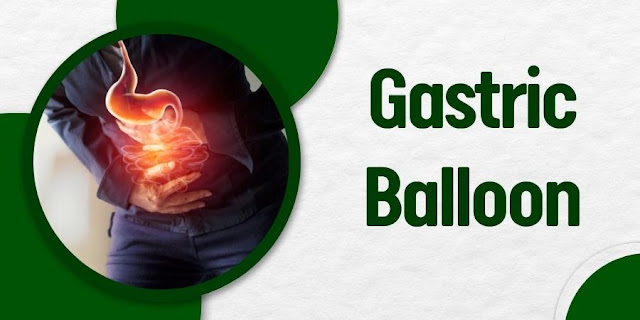Using a Gastric Balloon
A gastric balloon is a medical device designed to aid in weight loss by reducing the amount of food a person can eat and by promoting a feeling of fullness. It is a temporary, non-surgical option for individuals looking to lose weight, especially those who may not be eligible for or interested in more invasive weight loss surgeries like gastric bypass or sleeve gastrectomy.
 |
| Gastric Balloon |
Here's how a gastric balloon typically works:
Placement: A deflated silicone balloon is inserted into the stomach through the mouth using an endoscope, a thin, flexible tube with a camera on the end. Once the balloon is in the stomach, it is filled with a sterile saline solution. The inflated balloon takes up space in the stomach, reducing its capacity.
Fullness sensation: The presence of the balloon in the stomach creates a feeling of fullness and helps the patient eat smaller portions during meals.
Duration: Gastric balloons are typically designed for short-term use, usually up to six months. After this period, the balloon is deflated and removed.
Dietary and lifestyle changes: The use of a gastric balloon is usually combined with a comprehensive weight loss program that includes dietary and lifestyle modifications, as well as regular monitoring by healthcare professionals.
Gastric balloons can be effective in jump-starting weight loss for people who are obese or overweight, but they are not a long-term solution on their own. The success of this weight loss method often depends on the individual's commitment to making lasting changes to their eating habits and lifestyle. Additionally, there can be side effects and risks associated with gastric balloons, such as nausea, vomiting, and the potential for the balloon to rupture or migrate, which is why they should be used under the guidance of medical professionals.
It's important to consult with a healthcare provider or bariatric specialist to determine if a gastric balloon is a suitable option for your weight loss goals and to discuss the potential risks and benefits based on your individual health and circumstances.

A deflated silicone balloon is inserted into the stomach through the mouth using an endoscope, a thin, flexible tube with a camera on the end. Once the balloon is in the stomach, it is filled with a sterile saline solution. The inflated balloon takes up space in the stomach, reducing its capacity.
ReplyDelete